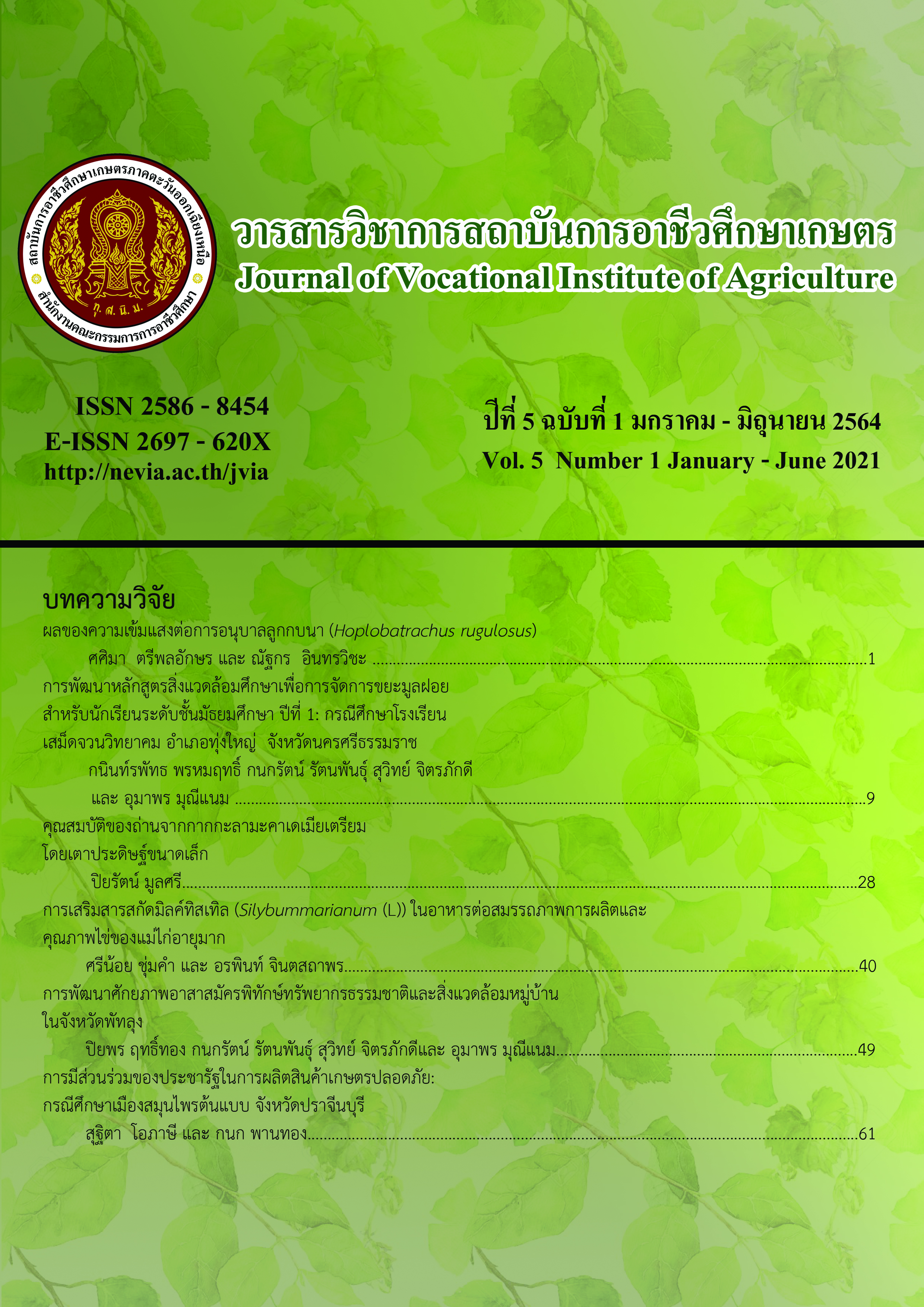Public Participation in Production of Safe Agricultural Products: Case study of the Herbal City, Prachinburi
Main Article Content
Abstract
This study examined the public participation in production of safe agricultural products in Prachinburi Province. The samples were collected by purposive sampling. There were 11 participants, consisting of 8 farmers, and 3 persons involved in organizing a project to support the production of herbs. The total duration of the study was 4 months, from February to May 2019, using in-depth interviews and an observation form to collect data on the production of safe agricultural products. It was found that success in the production of safe agricultural products was a result of participation of farmers, public sector and private sector. The participation of all sectors involved educating and raising awareness of decision-making, forming action groups, sharing benefits, and evaluating the process. The public sector led the initial process and encourageda continuous aggregation of farmers. The private sector participated by providing information and fulfilling the needs of farmers. The core farmers then became the leaders of the process in the sustainability of the production of safe agricultural products with participation from the government and private sectors.
Article Details

This work is licensed under a Creative Commons Attribution-NonCommercial-NoDerivatives 4.0 International License.
The content and information in articles published in the Journal of Vocational Education in Agriculture are the opinions and responsibility of the article's author. The journal editors do not need to agree or share any responsibility.
Articles, information, content, etc. that are published in the Journal of Vocational Education in Agriculture are copyrighted by the Journal of Vocational Education in Agriculture. If any person or organization wishes to publish all or any part of it or to do anything. Only prior written permission from the Journal of Vocational Education in Agriculture is required.
References
ยิ่งศักดิ์ ไกรพินิจ และคณะ. (2560). การจัดการการเกษตรสมัยใหม่ของประเทศไทย. วารสารวิจัยและพัฒนาวไลยอลงกรณ์ในพระบรมราชูปถัมภ์, 12(2), 115-127.
สำนักงานคณะกรรมการพัฒนาเศรษฐกิจและสังคมแห่งชาติ. (2559). แผนพัฒนาเศรษฐกิจและสังคมแห่งชาติ. เข้าถึงได้จาก https://www.nesdb.go.th.
สำนักงานคณะกรรมการนโยบายสมุนไพรแห่งชาติ. (2560). คู่มือยุทธศาสตร์การพัฒนาเมืองสมุนไพร.เข้าถึงได้จาก http://nph.dtam.moph.go.th/index.php/news-nph/download-document-nph/119-herbal-city.
เจมส์ แอล, เครย์ตัน. (2551). คู่มือการมีส่วนร่วมของประชาชน การตัดสินใจที่ดีกว่าโดยให้ชุมชนมีส่วนร่วม [The Public Participation Handbook: Making Better Decisions Through Citizen Involvement]. (ศ.นพ.วันชัย วัฒนศัพท์ และคณะ, แปลและเรียบเรียง). ขอนแก่น: โรงพิมพ์ศิริภัณฑ์ ออฟเซ็ท.
ชาย โพธิสิตา. (2550). ศาสตร์และศิลป์การวิจัยเชิงคุณภาพแห่งการวิจัยเชิงคุณภาพ. พิมพ์ครั้งที่ 3. กรุงเทพมหานคร: บริษัท อมรินทร์พริ้นติ้งพับลิชชิ่ง จำกัด.
วริพัสย์ เจียมปัญญารัช. (2560). ปัจจัยที่ส่งผลต่อความยั่งยืนของเกษตรกรอินทรีย์ของไทย: บทเรียนจากเกษตรกรรายย่อย. วารสารสังคมศาสตร์มหาวิทยาลัยศรีนครินทรวิโรฒ, 20(1), 199-215.
อภิชาต ใจอารีย์. (2561). แนวทางการขับเคลื่อนเกษตรอินทรีย์เพื่อสร้างความมั่นคงด้านอาหารปลอดภัยสำหรับชุมชน: บทสะท้อนจากภาคปฏิบัติการ. วารสารมหาวิทยาลัยศิลปากร, 38(5), 1-17.

